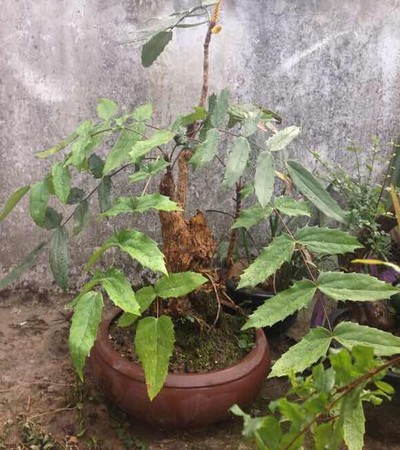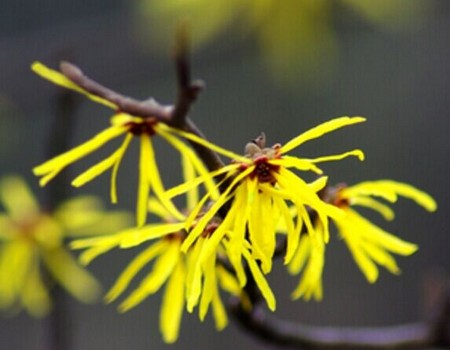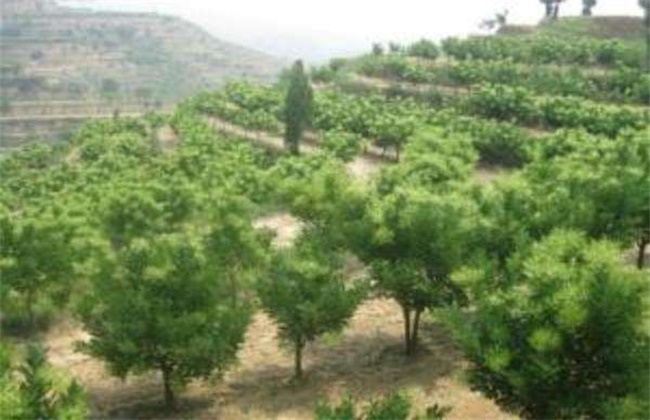Ten techniques of potted broad-leaf planting
The broad leaves are evergreen all the year round, elegant in shape, strange branches and leaves, beautiful flowers, yellow flowers, blue-purple fruit after maturity, beautiful pointed thorns in leaf shape and beautiful leaf color, which can be used for landscaping and indoor pot planting. Because of its unique branches and leaves, yellow flowers and purple fruits, it is chic and distinctive for landscaping. The ten hardships of broad leaves are planted in front and behind the house, specially harmonious in front of the white powder wall, and planted under the courtyard and garden wall as the foundation, which is quite beautiful.

The thick plants are selected and cut off to promote sprouting, which can form bonsai stumps with beautiful roots, leaves, flowers and fruits. It can be planted as a hedge in the garden. The four corners of the orchard and vegetable garden serve as a boundary forest, and the potted plant is equipped with entrance hall, conference room, hostel and living room to make people quiet and lovely. Planting ponds, pool sides, mountains and rocks, green, very elegant. It is more unique as a cut flower. In short, the top ten broad-leaf works attract people to watch with their unique elegant demeanor, whether they are leaves, stems and plants, and their elegant appearance is the treasure of ornamental flowers and trees. So, how to plant the top ten credits in potted plants?
Potted soil:
Pot soil should be slightly acidic, neutral or calcareous soil with good permeability, commonly used rotten leaf soil or mature pastoral soil, mixed with appropriate amount of sandy soil. It is not strict with the soil and grows vigorously in the wet, well-drained and fertile sandy loam.
Raising seedlings:
Ploughing and weeding three times a year, in May, July and September. Topdressing was applied twice after being removed in May and September. After transplanting, weeding 2-3 times a year, topdressing once, and pig manure water is suitable for fertilizer. The seedling bed should be pulled up as soon as it sees the grass, and should be properly watered when it does not rain in dry weather.
Planting:
It is appropriate to plant in the pot after autumn or before sprouting in spring. when digging seedlings, we must pay attention to protect the lateral root and whisker root, it is difficult to survive when there is only the main root, it is best to transplant with a soil ball, and at the same time, the branches and leaves should be thinned properly to reduce water consumption. The management of the top ten meritorious services is relatively extensive and is generally transplanted in early spring. Apply sufficient base fertilizer when planting, compact the soil after planting, and pour water through it.
When potted, a large amount of sand should be mixed in the cultivation soil to prevent stagnant water in the basin, and the soil can be turned over and changed once every two years. With the extraction of the root tiller and the continuous expansion of the plant, gradually change into the large pot, the maximum into the "three hoops" pot, do not plant into the bucket, because the ornamental value of the old plant is not high, too old plants can still be planted into smaller flowerpots through ramet and stubble.
Fat water:
Pay attention to watering during drought, it is best to carry out irrigation, furrow irrigation, sprinkler irrigation, irrigation and other methods can be used. If you pour rotten cake fertilizer or livestock manure once a year before winter, you can grow healthily. In the ten growing seasons, the mature thin liquid fertilizer is applied every 20 days, topdressing 2-3 times a year, and applying appropriate amount of cake fertilizer in early spring. If potted, the pot soil should be kept moist without stagnant water. Move to a sunny place indoors in winter, and the temperature should not be too high.
Major diseases and pests:
Spodoptera litura, Spodoptera litura, anthracnose, spot, leaf spot, rust, Japanese grass shoes, bran shield scale and so on.
Prevention and control methods:
1. Spodoptera litura and Spodoptera litura were sprayed with 1000 times of trichlorfon.
2. Anthracnose can be sprayed with 1000 times of thiophanate methyl wettable powder.
3. Spraying any insecticide such as dichlorvos, phosphos and carbaryl in the scale insect stage.
4. Clear the diseased leaves and burn them. Spray Bordeaux liquid or chlorothalonil during the onset period.
Time: 2019-05-25 Click:
- Prev

Planting technique of witch hazel
The leaves are beautiful in shape, especially the fragrant flowers in early spring. First flowers and then leaves, petals such as wisps similar to wax regret, so it is called golden regret, is an important ornamental tree in early spring. It is suitable for planting alone in a corner of the garden, by the pool, by the stream and at the edge of the bushes. The flower shape of this species is peculiar and fragrant, and the grass blooms first in spring.
- Next

Planting technique of Fructus Sophorae
Planting technique of Fructus Sophorae
Related
- Fuxing push coffee new agricultural production and marketing class: lack of small-scale processing plants
- Jujube rice field leisure farm deep ploughing Yilan for five years to create a space for organic food and play
- Nongyu Farm-A trial of organic papaya for brave women with advanced technology
- Four points for attention in the prevention and control of diseases and insect pests of edible fungi
- How to add nutrient solution to Edible Fungi
- Is there any good way to control edible fungus mites?
- Open Inoculation Technology of Edible Fungi
- Is there any clever way to use fertilizer for edible fungus in winter?
- What agents are used to kill the pathogens of edible fungi in the mushroom shed?
- Rapid drying of Edible Fungi

